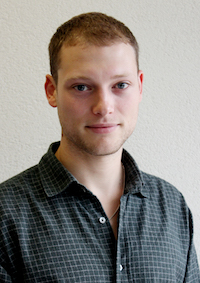Your DNA is a fundamental part of who you are. Unless you have an identical twin (and possibly not even then), it is incredibly unlikely that anyone else has, or will ever have, the same DNA sequence as you. As such, when you provide your DNA for research, or to a doctor, and especially to a company, it is important to ask “what will happen to my DNA?” In this blog, Chris [EDIT Lab PhD Student] and Joni [Post Doc at the SGDP Centre] tackle what happens (and what doesn’t) to your DNA.
The journey of your DNA sample begins with you providing someone with some of your genetic material, usually either saliva or blood (although other sources are available). This sample is then sent to a laboratory where a technician extracts DNA from it, often using big but surprisingly dull robots. Methods of DNA extraction differ according to the purpose of the extraction, as well as the type of sample, but essentially involve getting DNA out of cells, separating it from other things such as proteins, and then dissolving it into a solution to be analysed further.
“DNA is found in the centre (the “nucleus”) of most cells in the body.”
DNA is found in the centre (the “nucleus”) of most cells in the body. It consists of a series of chemical “bases”, small molecules that (in some parts of the DNA) determine the structure of the proteins that help cells function and develop, as well as where and when these proteins are expressed in the body. Although the majority of DNA bases are the same across all humans, there are still a large number that differ, and it is the combination of these differences that make your DNA unique.
Researchers can get meaningful information from your DNA through a process known as ‘sequencing’. This can be done either for all of your DNA (your whole genome), in a process known as whole-genome sequencing (because scientists are simple people at heart) or just focussed on specific parts of the DNA that encode proteins (which is called whole exome sequencing, because scientists also like jargon). However, in many health and research settings (including in our GLAD study), it isn’t necessary to know the whole sequence. Instead, we focus on measuring (”genotyping”) a set of specific changes in the DNA that help estimate millions of other such changes. You can see an example of one of these types of changes (“SNP”, which stands for Single Nucleotide Polymorphism) in the figure below. For more on the difference between sequencing and genotyping, see here.
So what do we do with this data? Research studies such as the GLAD study are linked with the NIHR BioResource. This is where samples are processed and stored securely, in accordance with the Human Tissue Act (HTA) and the EU General Data Protection Regulation (GDPR). The aims of this study are to try to understand more about anxiety, depression, and related traits, and hopefully inform novel prevention and intervention strategies. To analyse this data, researchers will need to obtain approval from the NIHR BioResource steering committee. This is made up of people who scrutinise each and every aspect of the study design to ensure that the research is ethical, useful, and necessary, with no risks to the study participants or their data. A strict legal agreement is then signed outlining how the data can be used and any researcher found to break these conditions is likely to jeopardise their career, and possibly face a criminal conviction. In addition, the employer of any person who breaks the rules would also be liable for very large fines.
“It is important to distinguish what is lawful, ethical and factual, from illegal, unethical and science fiction.”
Of course, people are right to ask questions and should be vigilant with regard to their personal data. However, it is important to distinguish what is lawful, ethical and factual, from illegal, unethical and science fiction. Another common concern, popularised by science fiction movies, is that scientists might begin to clone people. For a start, this would be illegal and highly unethical. Secondly, it would be near impossible to do this currently, from sequenced DNA data or biological samples. Although genomic technologies are advanced, it is impossible to produce a carbon copy of actual DNA using DNA sequence data. Furthermore, it would be extremely difficult to do this using human cells. The procedures that were famously used to clone Dolly the sheep in 1996 do not work in humans, due to differences between human and sheep eggs. To clone Dolly, the nucleus from a donor egg cell was removed (to be replaced with Dolly’s nucleus). Doing this in humans would cause components of the cell necessary for cell growth to also be removed or damaged (https://www.genome.gov/25020028/cloning-fact-sheet/). Regardless of the scientific possibility of human cloning, it is unethical and illegal (under UK law) and will likely remain so.
A common concern is that private/commercial companies might get hold of data and use it against individuals, or for reasons that may be harmful to groups of people. Within the GLAD study, as the data is de-identified and anonymised, the risks to participants are low. The GLAD study aims to understand these complex diseases in order to encourage the development of new and effective preventative and treatment strategies. Sometimes commercial research can be really central in driving such development. For example, the direct-to-consumer DNA genotyping company 23andMe has made valuable contributions to studies focusing on the genetics of depression.
The more ethically approved research that is carried out, the better equipped we will be to tackle the burden inflicted by psychiatric disorders and poor mental health. The rigorous ethical standards and the care that is taken to ensure that they are followed mean that research using genetic methods in GLAD and similar research studies will only be carried out for the improvement of health and wellbeing.




